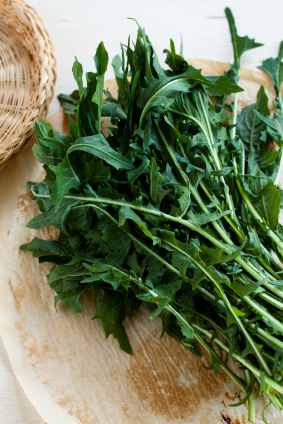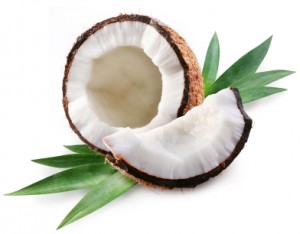Dandelion Greens, The Amazing Natural Medicine
Often overlooked as an annoyance in your yard, dandelion greens contain an amazing array of dazzling benefits.
What if you read in the news that medical science just discovered a new drug that could prevent or cure liver disease–including hepatitis, purify your blood, dissolve kidney and gall stones, help digestion, aid in weight loss, act as a diuretic, eliminate acne, relieve constipation and diarrhea, lower high blood pressure, prevent or cure anemia, lower cholesterol, reduce acid reflux, prevent various types of cancers, and prevent or control diabetes?
What if it had no harmful side effects?
All of these benefits are packaged in one plant—the dandelion.
The dandelion is one of nature’s top healing plant foods.
Dandelion has been used for hundreds of years in China, Europe, and the Americas to treat hepatitis, kidney, and liver disorders. And it’s often used as a natural treatment for hepatitis C, anemia, and general liver detoxification.
Rich in beta carotene (plant-based source of vitamin A), fiber, potassium, iron, calcium, cobalt, copper, boron, molybdenum, magnesium, phosphorus, B vitamins, vitamin D, and a good source of protein as well—this plant is as super-powered as you can get!
• Vitamin A is important in fighting cancers of epithelial tissue, including mouth and lung.
• Potassium rich foods, balanced with magnesium, help keep blood pressure down and reduce risk of strokes.
• Fiber helps stabilize blood sugar, lowers cholesterol, reduces cancer and heart disease, and assists in weight loss.
• Calcium, boron and phosphorus and magnesium work together to build strong bones and can lower blood pressure.
• B vitamins help reduce stress, aid the nervous system and give you energy.
Dandelion’s strong diuretic properties help to lower blood pressure, and remove excess fluids from the body by increasing urine output, helping to flush toxins from the body.
Dandelion is excellent for reducing edema, bloating, and water retention. Dandelion diuretic is actually as effective as the potent diuretic drugs, Furosemide and Lasix, used for congestive heart failure and cirrhosis of the liver, with none of the serious side effects.
Dandelion roots contain inulin and levulin, substances that may help balance blood sugar, making it helpful in treating diabetes. Inulin, a soluble fiber, also helps digestion by feeding the healthy bacteria in the intestines, where it increases nutrient absorption as well.
Dandelion has had a long history of being effective for helping with weight loss.
In controlled tests on laboratory mice, a loss of up to 30% of body weight in 30 days was possible when the animals were fed dandelion extract with their food.
The bitter substance in dandelion (taraxacin) stimulates effective digestion.
The bitter taste actually promotes the secretion of bile from the liver and gallbladder, as well as hydrochloric acid from the stomach.
Choline is another ingredient of dandelion that is a liver stimulant.
Our livers work very hard to filter the toxins that we come into contact with on a daily basis, and need help removing some of these modern day poisons from our body. Rough skin and acne, constipation, gas and bloating, frequent headaches, and PMS are all possible indications of an overburdened liver.
Dandelion is high in Linoleic and Linolenic Acid–essential fatty acids (omega 3 and omega 6) required by the body. These fatty acids can lower chronic inflammation, such as proliferative arthritis, regulate blood pressure and the menstrual cycle, and prevent unhealthy blood clots.
Both dandelion leaves and root are used to treat heartburn and indigestion. The pectin in dandelion relieves constipation and, in combination with vitamin C, reduces cholesterol.
On top of all that, dandelion contains multiple anti-diarrheal and antibacterial properties.
Dandelion greens are high in oxalate, a naturally occurring anti-nutrient found in some fruits and vegetables that binds up minerals preventing their full absorption and can contribute to kidney stones, gallstones, and gout in susceptible people.
But luckily, oxalate can be easy to mitigate by simple and light cooking as in the recipe below. If you pick wild dandelions, rather than purchasing them at the market, you can take advantage of the flower and roots, which also offer health benefits. But be sure to pick dandelions from areas that are safe from lawn pesticides, car exhaust and passing dogs, however.
The dandelion greens that you buy in the market are usually more mild tasting and less bitter than straight from your yard. You can add them to salads, soups, or stir-fries.
The following is one of my favorite recipes for you to try from my friend, Jenny at Nourished Kitchen :
Wilted Dandelion Greens
Ingredients
1 Tbsp whole mustard seed
1 Tbsp grass fed butter
4 ounces nitrite-free bacon, chopped
1 small shallot, peeled and coarsely chopped
1 pound young dandelion greens, rinsed well and coarsely chopped
2 teaspoons red wine or apple cider vinegar
Directions
Place a cast iron or stainless steel skillet over a high flame and toss in mustard seeds, toasting gently until they release their fragrance – about two minutes. Transfer mustard seeds to bowl or dish to cool while you prepare the remaining ingredients.
Reduce the heat to medium and spoon butter into the skillet, allowing it to melt until it begins to froth. Add chopped bacon to the butter and fry it until crisped and its fat rendered. Transfer the bacon to the dish holding your toasted mustard seed.
Toss chopped shallot into the rendered bacon fat and fry until fragrant and softened, about three minutes.
Stir in dandelion greens into the chopped shallot and bacon fat, and immediately turn off the heat as the greens will wilt in the skillet’s residual heat.
Pour in vinegar and continue stirring the greens until wilted to your liking. Transfer to a serving dish and dress with toasted mustard seed and crisped bacon.
Serves 4, Prep time: under 10 minutes
Enjoy dandelion’s massive health benefits!
Till next time, stay healthy and lean!
 Catherine (Cat) Ebeling RN BSN, is a back to basics diet and nutrition specialist. In addition to her advanced degree innursing from a major medical school, she has spent the last 30 years intensely studying diet, health and nutrition. She also has a book titled “The Fat Burning Kitchen, Your 24 Hour Diet Transformation” that has sold over 60,000 copies worldwide, and has helped thousands of people transform their lives, lose weight and improve their health.
Catherine (Cat) Ebeling RN BSN, is a back to basics diet and nutrition specialist. In addition to her advanced degree innursing from a major medical school, she has spent the last 30 years intensely studying diet, health and nutrition. She also has a book titled “The Fat Burning Kitchen, Your 24 Hour Diet Transformation” that has sold over 60,000 copies worldwide, and has helped thousands of people transform their lives, lose weight and improve their health.
Her mission is to help others prevent disease and live their best life ever.
Nutrition made Easy. Simple.Smart.Nutrition.















